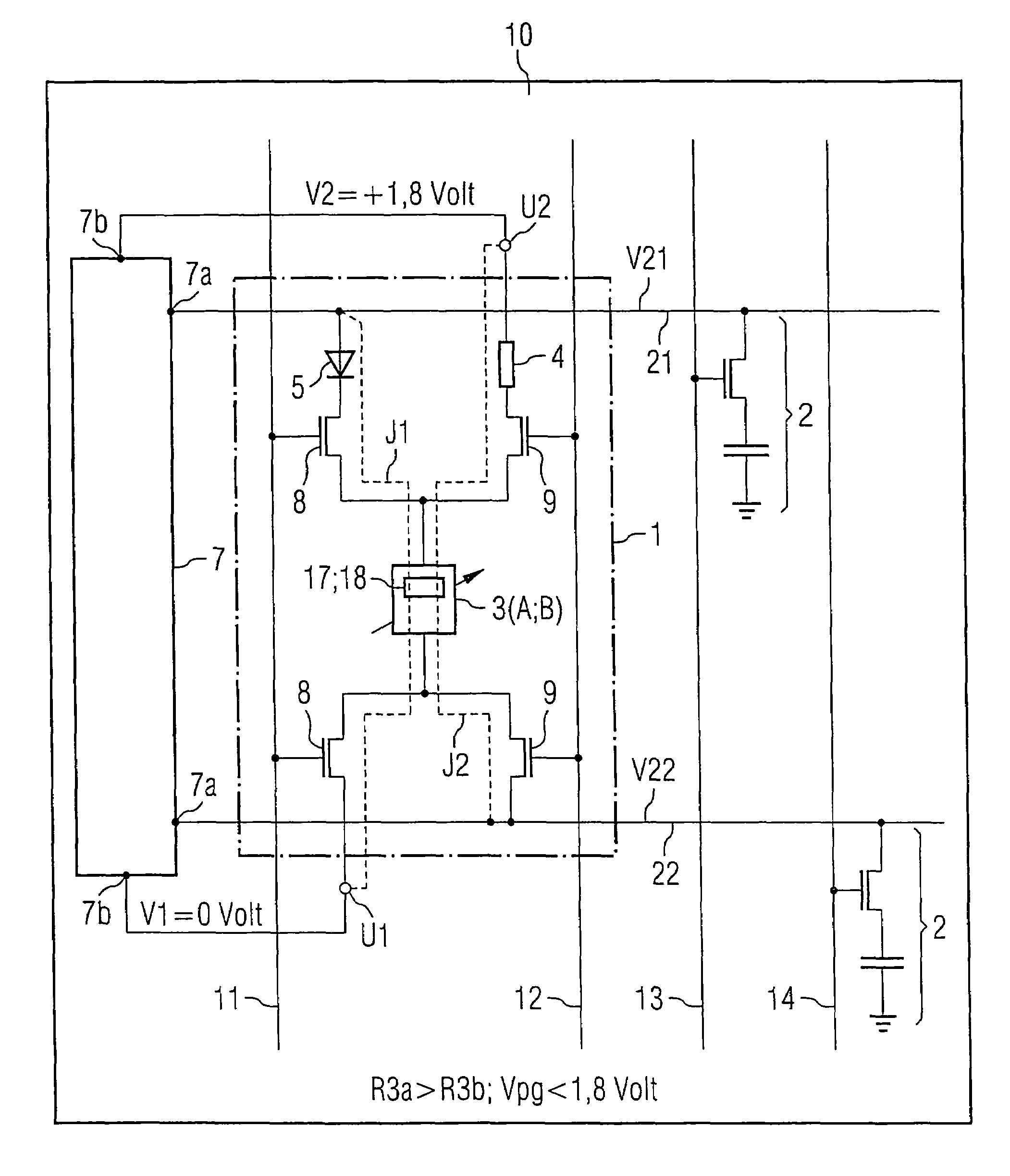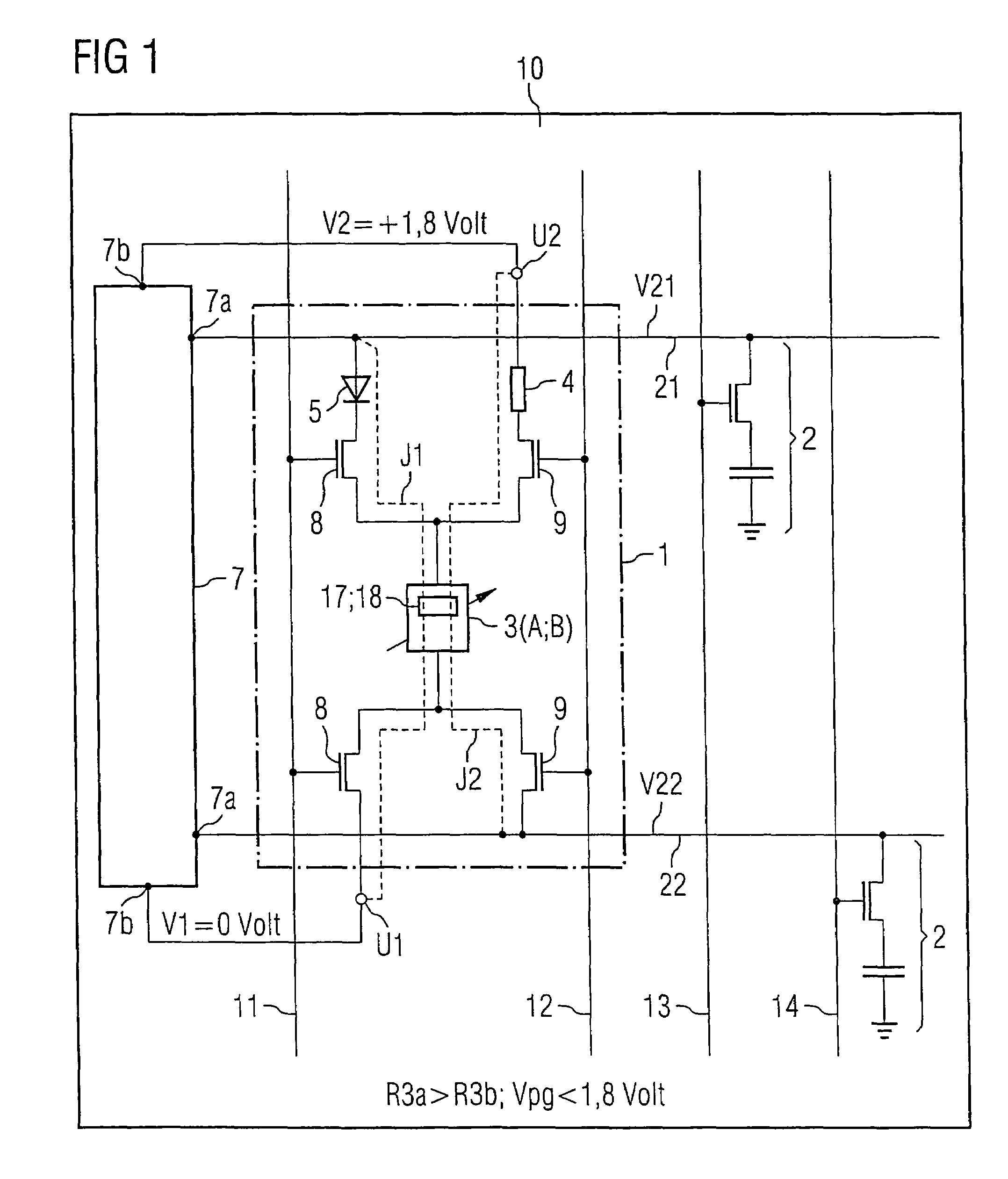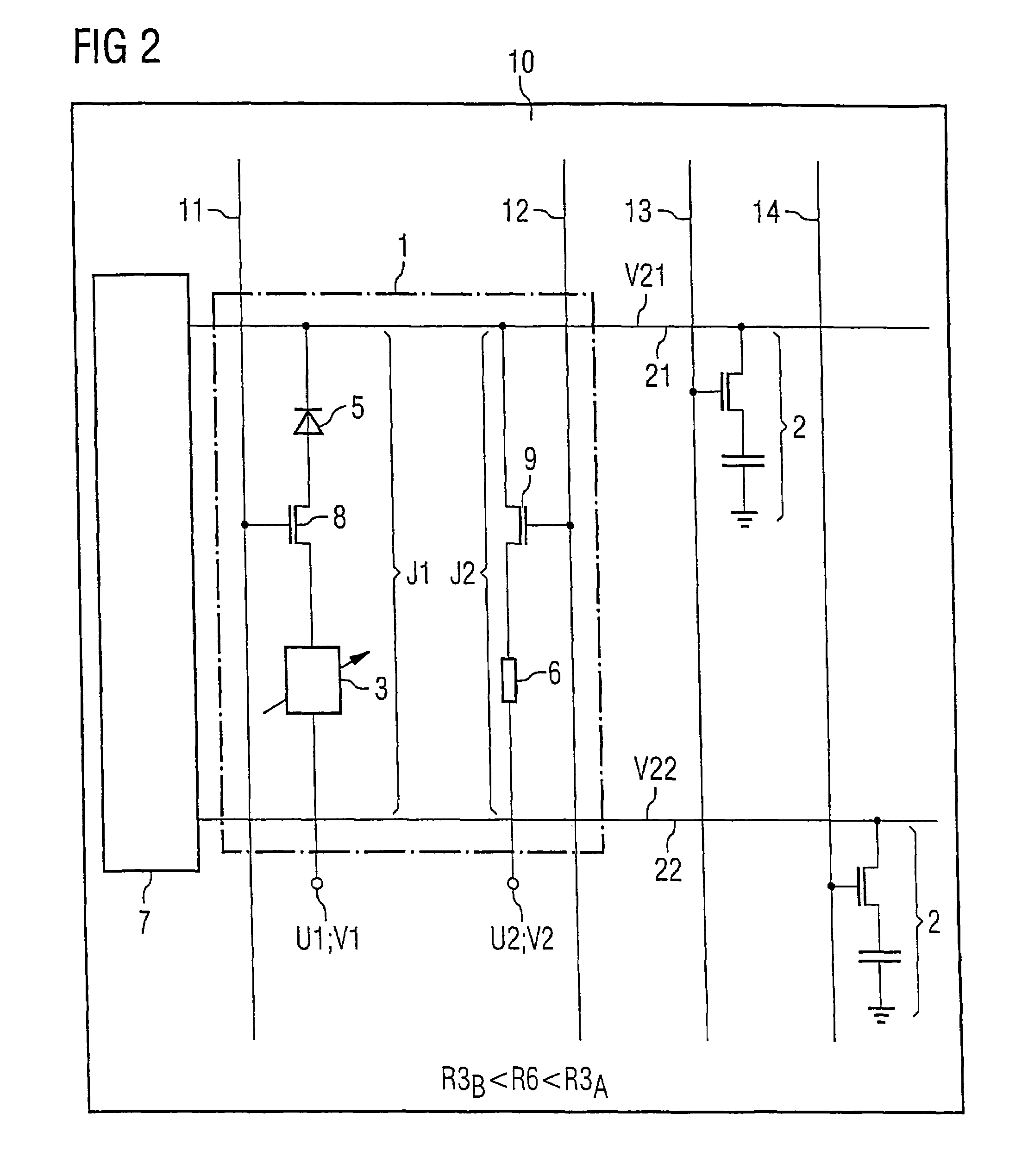Nonvolatile memory cell and methods for operating a nonvolatile memory cell
- Summary
- Abstract
- Description
- Claims
- Application Information
AI Technical Summary
Benefits of technology
Problems solved by technology
Method used
Image
Examples
Embodiment Construction
[0061]FIG. 1 shows an integrated semiconductor memory 10, into which is integrated a memory cell 1 according to the invention in accordance with a first embodiment. The memory cell 1 is connected to two word lines 11, 12 and also to two bit lines 21, 22. Volatile memory cells 2 each having a selection transistor and a storage capacitor are furthermore connected to the bit lines 21, 22. The memory cells 2 are connected to further word lines 13, 14. The word lines 11, 12 to which the nonvolatile memory cell 1 according to the invention is connected are formed in the same way as the further word lines 13, 14. In particular, they are operated with the same potentials. As a result, the memory cell according to the invention can be integrated into a memory cell array with volatile memory cells 2 with minimal additional outlay.
[0062]The memory cell 1 has a programmable component 3, which, depending on the programming state, is either at high impedance (programming state A) or at low impeda...
PUM
 Login to View More
Login to View More Abstract
Description
Claims
Application Information
 Login to View More
Login to View More - R&D
- Intellectual Property
- Life Sciences
- Materials
- Tech Scout
- Unparalleled Data Quality
- Higher Quality Content
- 60% Fewer Hallucinations
Browse by: Latest US Patents, China's latest patents, Technical Efficacy Thesaurus, Application Domain, Technology Topic, Popular Technical Reports.
© 2025 PatSnap. All rights reserved.Legal|Privacy policy|Modern Slavery Act Transparency Statement|Sitemap|About US| Contact US: help@patsnap.com



